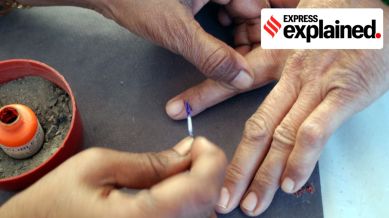7 takeaways from Election Commission’s announcement of Lok Sabha polls
The Lok Sabha elections, the world’s largest democratic excercise, will be held in 7 phases from April 19 to June 1, with counting to take place on June 4.

The Election Commission (EC) on Saturday (March 16) announced the schedule for the upcoming Lok Sabha and state Assembly elections during a press conference in New Delhi.
Here are 7 key takeways.
- 01
When are the Lok Sabha elections scheduled to take place?
Given the magnitude of India’s elections, voting occurs in multiple phases, over a period of time. The EC announced a detailed schedule of elections, along with a map showing when each constituency will go to polls. Elections will take place in seven phases from April 19 to June 1, with counting set to take place on June 4.
- 02
How many people are eligible to vote during these elections?
The total electorate in the country, as per EC’s electoral rolls, is just shy of 1 billion (100 crore) people — roughly 12.5 per cent of the global population — with roughly 96.8 cr individuals registered at the moment. This number will change in the coming days as more people register themselves to vote. Almost 97 crore people were eligible to vote in the 2019 elections, while the total registered electorate in 2014 comprised 81.45 crore people. Of this number, roughly 49.7 crore are men, while 47.1 crore are women. There are around 1.8 crore first time voters.
- 03
What is the process for registering to vote?
If any person eligible to vote (an 18+ year old Indian citizen) is left out of the electoral rolls, or has had their name deleted for some reason, she can apply to have her name included at the earliest. The EC’s website provides details of how to apply for inclusion in electoral rolls, and how to check if your name is included or not. Please note that the law does not allow inclusion into the rolls after 3 pm on the last date of filing nominations. Check out EC’s website (https://voters.eci.gov.in/) for more information.
- 04
What are the identification documents required to cast one’s vote?
According to EC data from 2019, over 99 per cent of eligible voters have been given their Elector Photo Identity Card (EPIC), the primary identity document provided by EC. However, in case this is not available a number of other official photo identity documents may be use including one’s passport, driving licence, PAN card, MGNREGA job card, and AADHAR card.
- 05
Where can you cast your vote?
To cater to a billion voters, EC will set up thousands of polling stations across the country. EC tries to ensure that polling stations are set up in such a manner that no voter has to travel more than 2 km to cast their vote. The upcoming Lok Sabha elections will be hosted in roughly 10.5 lakh polling stations, with the help of 1.5 crore polling officials and security staff. Refer to the EC website (https://electoralsearch.eci.
gov.in/pollingstation ) to know your polling booth. - 06
How many EVMs will be needed for the elections?
The EC will require roughly 55 lakh Electronic Voting Machines (EVMs) and Voter Verifiable Paper Audit Trail (VVPAT) machines for conducting the upcoming election. In 2019, the EC had requisitioned 23.3 lakh ballot units (where votes are cast), 16.35 control units (where tallies are stored), and 17.4 lakh VVPAT machines. The EC has also provided information on how EVMs work, and how to use them. To know more, refer to the EC website. ( https://www.eci.gov.in/evm-vvpat )
- 07
And what changes with today’s announcement?
Perhaps most importantly, with today’s announcement, the Model Code of Conduct (MCC) has come into immediate effect. The MCC is a set of guidelines issued to regulate political parties and candidates prior to elections. It governs things such as speeches, campaigning, content of election manifestos, behaviour in polling booths, etc. to ensure that free and fair elections are conducted in the country.